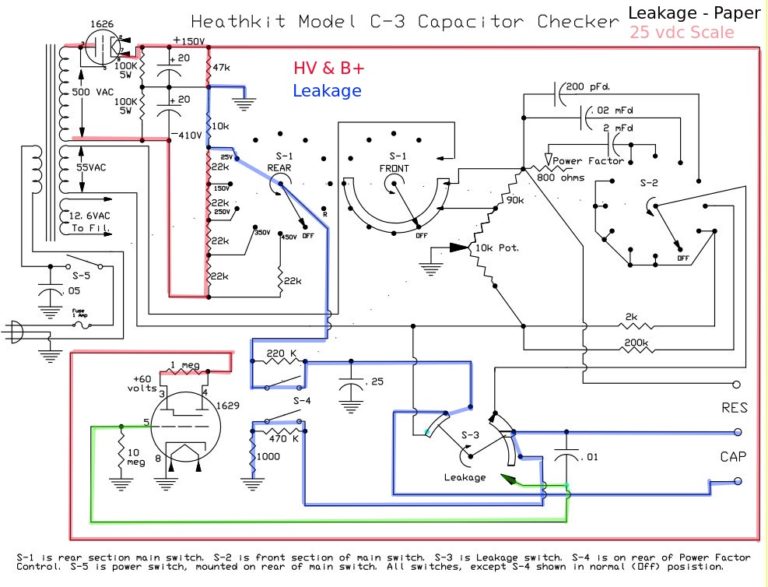Heathkit C3 Condenser Checker – How it Works Part 3

Heathkit C3 Condenser Checker – How it Works Part 3 Filed in C3 Capacitor Tester on Dec.18, 2017 In Part 1 of this series of posts, I introduced the Heathkit C3 Condenser Tester Wheatstone Bridge operation. In Part 2, we traced out the schematic of the Resistance and Capacitance measurements. Here in Part 3, we will delve into the Leakage Test function of the tester. The Leakage test operates by placing a selectable DC voltage across the capacitor under test. For large electrolytic caps, a couple of series resistors are added to limit the surge current when the voltage is applied for the test. For smaller capacitors, the voltage is applied straight to the device under test. Leakage Test – 25 volt In the diagram above, you can see that the high voltage winding of the transformer at the top left of the diagram is rectified by the 1626 tube, resulting in about 500 vdc. This voltage is split into two sections where the chassis ground is connected betwe...


